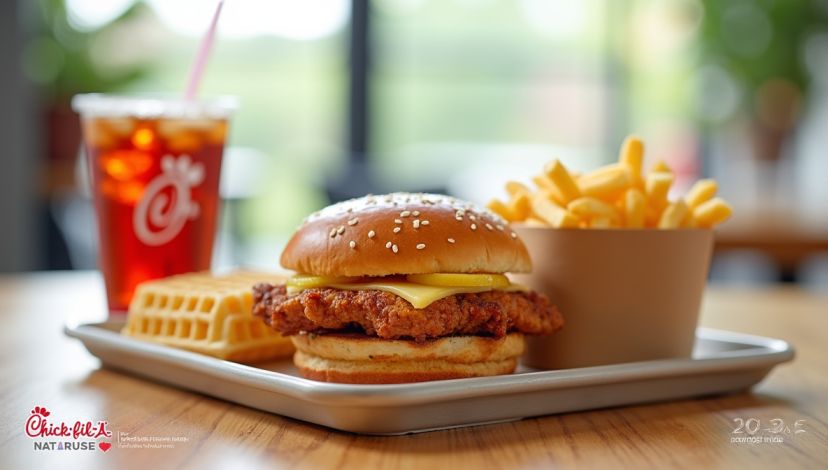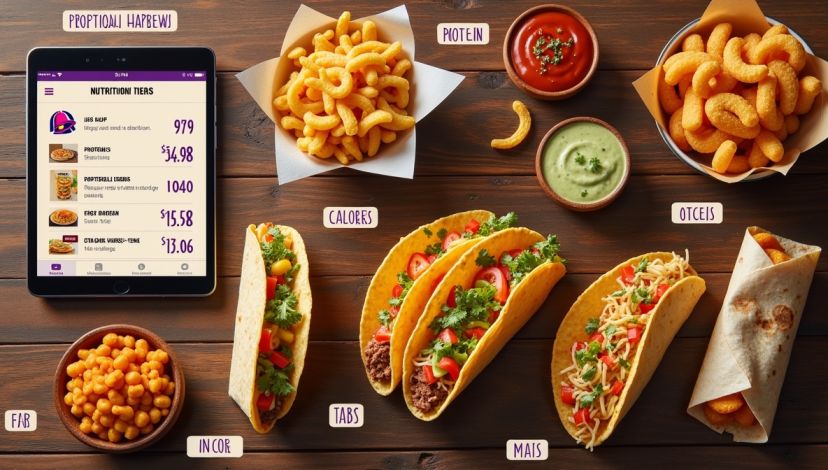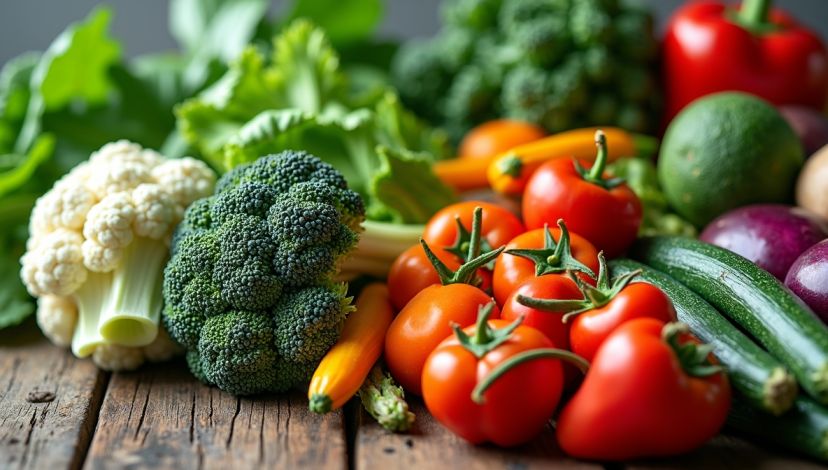Taco Bell is also a favorite fast food restaurant of most people because it has tasty food, even though it is cheap. However, understanding Taco Bell nutrition facts is essential if you want to enjoy your meal without compromising your health goals. Are you on a calorie count, sodium restriction, or vegetarian diet? You can know how nutritious the foods offered at Taco Bell are so as to make more informed choices.
In this blog post, we will explore various aspects of Taco Bell nutrition, including calorie counts, macronutrients, healthier menu choices, and tips for balancing indulgence with nutrition. At the close of the book, one will understand what he/she is having and consuming Taco Bell healthily.
Key Points:
- Taco Bell has an increased number of menu items that contain various nutrition profiles.
- The number of calories, fat, sodium, and protein is quite different in different items.
- Calories and sodium can be cut by eating healthier and customizing.
What Do Taco Bell Nutrition Facts Say About the Calorie Count of Popular Menu Items?
The calorie number in your favorite foods of Taco bell is the first step towards nutritional perfection management. The various food items in the menu of Taco Bell consist of tacos, burritos, nachos, and specialty bowls, each with an individual number of calories.
To illustrate, a standard Beefy Crunch Burrito has approximately 500 calories, whereas a 7-Layer Burrito also packs approximately 500 calories with a little bit different composition of fat and protein. Vegetarian meals, such as Bean Burrito, are considered to be lighter and contain a far fewer amount of calories, about 370.
The table below represents a comparison of the Calorie content of some of the popular items:
| Menu Item | Calories | Fat (g) | Protein (g) | Sodium (mg) |
| Beefy Crunch Burrito | 500 | 22 | 14 | 1060 |
| 7-Layer Burrito | 500 | 18 | 17 | 1090 |
| Bean Burrito | 370 | 10 | 13 | 980 |
| Classic Beef Taco | ~180 | 10 | 8 | 310 |
| Chicken Soft Taco | ~150 | 7 | 10 | 360 |
Note: The values of calories may differ depending on customized and regional diversities.
Being aware of these numbers assists you with balancing out your meal options during the day. As an example, one can opt to take a burrito with a side salad instead of chips, and this will decrease the content of calories ingested.
What Do Taco Bell Nutrition Facts Reveal About the Macronutrient Profiles of Their Foods?
Carbohydrates, proteins, and fats are macronutrients which are critical in nutrition. The foods available at Taco Bell have high variability of macronutrients based on the contents used, such as meat, beans, cheese, and sauces.
Tortillas, rice, and beans are the main sources of carbohydrates, which are present in Taco Bell items. Sources of protein are beef, chicken, and beans, whereas sources of fats are cheese, sour cream, and cooking oils.
To take an example, the beefy 5-layer burrito contains approximately 68 grams of carbs, 19 grams of proteins, and 22 grams of fat. On the contrary, Fresco Bean Burrito contains fewer fats (about 8 grams) and calories, and a more than sufficient amount of protein (12 grams).
The following is a breakdown between macronutrient percentages of some items:
| Menu Item | Carbs (g) | Protein (g) | Fat (g) |
| Beefy 5-Layer Burrito | 68 | 19 | 22 |
| Fresco Bean Burrito | 57 | 12 | 8 |
| Classic Chicken Taco | 13 | 10 | 7 |
| 7-Layer Burrito | 69 | 17 | 18 |
The information helps the weight watchers or body builders who count their macros. As an example, one looking to hit more protein may select Beefy 5-Layer Burrito, and one looking at a low-fat meal may select Fresco Bean Burrito.
Do Taco Bell Nutrition Facts Highlight Any Healthier Grab‑and‑Go Options?
Yep, there are quite a number of things that Taco Bell has that can be incorporated into healthier eating, particularly when you order a customized one. A case in point is the Fresco menu, where cheese and sauces are substituted by fresh salsa, making it fat and calories lighter.
Low calories and fewer fat are contained in vegetarian fares such as 7-Layer Burrito and Bean Burrito, which are rich in fiber and protein. There is also an option of going with items in Fresco Style to reduce calories by doing away with cheese and cream sauces.
Besides, it has come up with bowls and Power Menu that offer balanced nutrition with vegetables and lean protein at Taco Bell. As an illustration, the Power Menu Bowl chicken offers an effective balance of the protein, fiber, and moderate calories.
Note: A lot of improvement in nutrition can be done by customizing your order, such as eliminating high-fat foods in the order like sour cream or cheese.
What does the Sodium Content mean to your Taco Bell Decisions?
Sodium is a key fact to be considered when taking fast food. Numerous Taco Bells products include a large amount of sodium, which, in case it is exceeded, may lead to such problems as hypertension and other illnesses.
Case in point, the Beefy Crunch Burrito contains above 1000 mg of sodium, that comprises almost the half of the suggested day by day allowance in most grown-ups (2300 mg). The 7-Layer Burrito is also high in sodium content estimating to 1090 mg per bite.
Let us take a quick look at sodium amounts in some Taco Bell products:
| Menu Item | Sodium (mg) |
| Beefy Crunch Burrito | 1060 |
| 7-Layer Burrito | 1090 |
| Bean Burrito | 980 |
| Chicken Soft Taco | 360 |
| Classic Beef Taco | 310 |
In order to consume less sodium, think about ordering lower-sodium items or making specific orders, where you do not want your sauces to be salty or seasoned. You can also control the sodium level by drinking large amounts of water and balancing your food with low-sodium food.
Notice: Blood pressure may be influenced by high levels of sodium in the diet; watch your diet.
What is There to Do When You Want to Have Taco Bell but Are Trying to Watch What You Eat?
Vacations and the Taco Bell is not off-limits when you are on a nutrition plan, as long as you make some conscious decisions and watch portions. The following are tips:
- Take small amounts or share big portions.
- But when to cut down calories and fat, it is recommended to order Fresco Style or vegetarian.
- Refrain on high-calorie additions such as nachos and huge sodas.
- Couple your meal with fresh vegetables or a side salad.
- Monitor what you eat and drink on a daily basis in order to be below your daily limit of calories and sodium.
As an example, a chicken soft taco with some black beans and water might be a balanced meal instead of soda. It is a mixture that provides containment of protein and fiber as well as lower calories.
Knowing well and ordering specifically can make you enjoy Taco Bell without affecting your health condition.
Conclusion
Taco Bell nutrition varies significantly across its menu, offering options for indulgence and healthier eating alike. Knowing the amount of calories, Macros, and sodium content can assist you in making informed decisions that serve your health interests. So if you feel like stuffing yourself to your teeth with a good old burrito or are thinking of something lighter, Taco Bell will satisfy the needs of everyone.
Don’t forget to tailor your individual foods, keep in mind about the amount a person eats, and have a balance diet. These tips enable you to consume Taco Bell in a healthy way and at the same time be responsible in your eating.
FAQ’s
1. What is the least calorie-dense food at Taco Bell?
Fresco Bean Burrito has one of the lowest counts, with almost 350 calories.
2. Is it possible to make Taco Bell healthier?
So, having Fresco Style or taking off the cheese and sour cream helps to cut calories and fats.
3. What is the amount of sodium in a burrito of Taco Bell?
Depending on the item, sodium content is between 900 and more than 1000 mg per burrito.
4. Does Taco Bell have a vegetarian menu?
Yes, such products as 7-Layer Burrito and Bean Burrito are vegetarian-friendly.
5. Does Taco Bell have a high-protein diet?
Others, such as Beefy 5-Layer Burrito, are high in protein-related diets.













